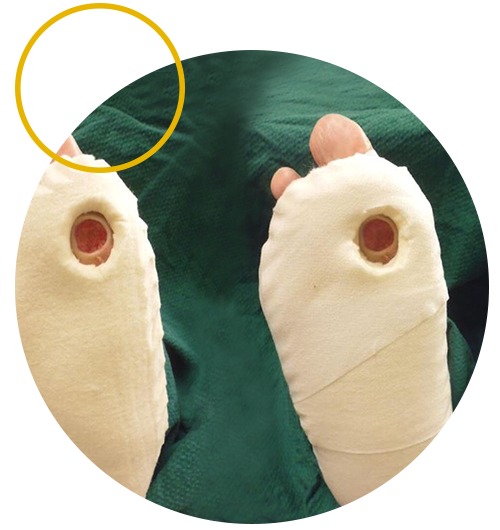Offloading refers to minimising or removing weight placed on the foot to help prevent and heal ulcers, particularly those caused by poor circulation to the feet due to diabetes. Offloading can be done by using a wheelchair or crutches, or through more practical means for the patient such as total contact casts or removable cast walkers. The idea is to protect your wound from getting worse or becoming infected because of added weight on the area. A TCC evenly distributes weight across the entire sole of your foot so that a diabetic ulcer can heal without added weight strain.

Why is it needed?
There are many potential solutions for healing diabetic foot ulcers, but what all these solutions have in common is that they require a mechanical environment that will not destroy the healing treatment. This is achieved through devices such as crutches and wheelchairs that will effectively remove stress from the wound and its immediate environment. The effectiveness of off-loading is realised by the reduction of pressure on the wound.
How it works
Total contact casts (TCCs) and removable walkers have been shown to be extremely effective in off-loading the diabetic foot, with pressure reduction reported in 87% of cases by limiting ankle motion and redistributing load to the device itself. For these reasons, devices that only extend to the ankle, such as cast shoes and forefoot off-loading shoes, may be less effective in off-loading the foot than devices that extend above the ankle, as do TCCs and walkers.
If you or the person you are caring for has a diabetic foot wound or ulcer that is open and is having difficulty healing, you can come in for an assessment.

Make An Appointment by clicking here.

Assessment with our doctors who are specialists in wound healing.

Carry out treatment plan that would include casts, walkers or wheelchair.

Follow-ups with home nursing option

Better quality of life with closing wound